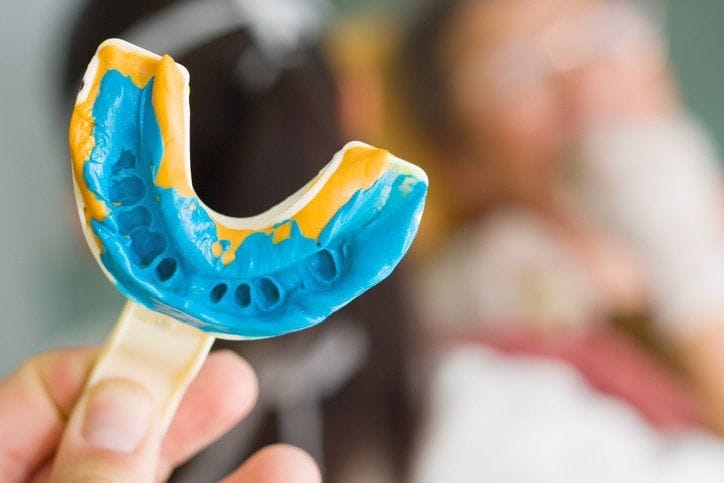
Taking a dental impression is usually one of the first steps in creating a crown or a bridge after a patient has broken a tooth. However, dental impressions are also used for a variety of other purposes: to build removable dentures, to analyze the relationship between a patient’s jaws, or to create custom mouth guards, retainers, or whitening trays.
In all cases, the point of the process is to create a negative imprint or mould of the patient’s teeth and soft tissues, which can then be used to create a positive cast or model. This imprint is made by having the patient bite down into a dental impression tray filled with some sort of impression material (often alginate or silicone). Once the material is set and the process is complete, the result should be an accurate reproduction of the patient’s teeth and soft tissue, which can then be used for whatever purpose is required.
The process of taking dental impressions is a common part of a dental hygienist’s job. There are several ways to do it, with varying tools and materials, depending on the level of accuracy required and the exact purpose of the impression. Here is some more useful information to help you understand this important aspect of modern dentistry.
Graduates of a Dental Hygienist Program Understand the Differences Between Impression Materials
Processes for creating a dental impression can vary in several ways. The dental impression tray can be either stock or custom, plastic or metal. The area being captured may be either full or partial. But most importantly, there is a range of possible impression materials that can be used, each with their own benefits and drawbacks.
 As impression materials vary, so will the stability and fidelity of the impression
As impression materials vary, so will the stability and fidelity of the impression
One way to understand the differences between impression materials is to classify them by rigidity and elasticity. Rigid materials such as plaster, waxes, and hard silicones create very hard, stable impressions, but are less accurate than elastic or fluid materials such as alginate, polyether, and fluid silicones. This is why rigid and fluid materials are often combined in a two-step process, in which a rigid impression, after setting, is filled in and impressed again with a fluid impression material. In a dental hygienist course, students learn which type of material and technique is best suited for each situation.
Some Patients May Experience Slight Discomfort, but There Are Ways to Help
Those with a diploma in dental hygiene know that a dental impression is normally an entirely painless and fairly comfortable process. That said, certain patients may experience some minor discomfort. This is usually either because of the taste of the alginate material used to create the impression or because the patient has a sensitive gag reflex.
The taste of the alginate may be unavoidable, but only lasts as long as the impression is being taken, and can be rinsed out immediately with water or mouthwash. Asking the patient to breathe through their nose will often help with a sensitive gag reflex, as will sitting the patient upright, since reclining may put their throat in an awkward position.
 Having a dental impression taken doesn’t need to be an uncomfortable experience
Having a dental impression taken doesn’t need to be an uncomfortable experience
Are you interested in starting a new career as a dental hygienist?
Contact Oxford College for more details about our dental hygienist program.






